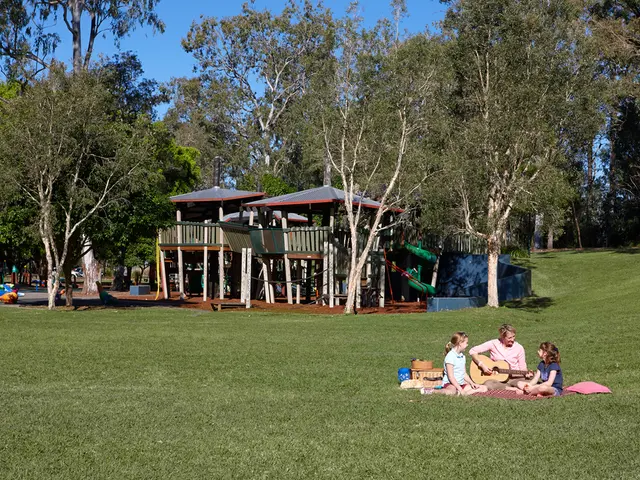Can questioning the legality of pruning neighbor's tree roots in one's own garden prompt an answer from a legal and environmental authority?
Managing Tree Roots: A Guide for Homeowners
Dealing with tree roots can be a delicate matter, especially when it comes to cutting them. Here's a comprehensive guide to help you navigate this process with care and caution.
The Risks of Cutting Tree Roots
Cutting tree roots can potentially harm the tree, affecting its health and stability. Roots are essential for absorbing water and nutrients, anchoring the tree, and supporting its growth. Severing roots disrupts these functions and may cause stress or decline in the tree, especially if major roots or a large portion of roots are cut.
Precautions to Take
When cutting or managing tree roots, it's crucial to proceed with caution. Here are some key precautions to keep in mind:
- Avoid cutting major or structural roots if possible. Small surface roots may sometimes be pruned carefully without severe consequences, but large roots are critical to tree stability and health.
- Do not apply tar, paint, or sealants to cut roots or branches. These substances can promote rot rather than protect roots.
- Avoid burying cut roots under soil. Some species need air around the roots; covering them traps moisture and encourages disease, potentially killing the roots.
- Consult with a certified arborist before removing roots that are causing damage to concrete, pipes, or other structures. In some cases, root pruning might be performed safely; in others, tree removal might be necessary to prevent further damage.
- Consider soil and water conditions. Proper soil compaction, drainage, and maintaining optimal conditions can help roots grow downward rather than pushing up against hard surfaces like concrete.
- If roots are causing damage to concrete or underground utilities, it is important to address these proactively with expert guidance to prevent expansion and serious harm.
Tree Preservation Orders (TPOs)
If a tree is subject to a TPO, you will need to obtain consent from the local authority prior to any works. It's strongly advised to consult a qualified arborist before cutting roots, especially for large or mature trees. If unsure about a tree's TPO status, contact your local tree officer via the council's website.
Shared Ownership and Neighbourly Considerations
If the base of a tree growing on a boundary is shared, you and your neighbour have joint ownership, known as "tenants in common". In case of joint ownership, you'll need your neighbour's permission to do any work that affects the whole tree.
When it comes to cutting the roots of a neighbour's tree, approach the issue with caution and full knowledge of the do's and don'ts. Remember, this should be handled similarly to cutting a neighbour's hedge. Before undertaking any work on trees, it's important to check if they are subject to a Tree Preservation Order (TPO).
Protection for Wildlife
If protected species like nesting birds or roosting bats might be impacted by your actions, consult an ecologist for advice.
In summary, cutting tree roots should be done cautiously and preferably under professional guidance, as inappropriate root cutting can weaken the tree or cause its decline. Taking precautions such as avoiding harmful treatments and understanding root biology can help minimize damage to the tree.
Maintaining a healthy home-and-garden includes preserving the welfare of trees, especially when dealing with tree roots. Careful management of tree roots is essential to ensure the longevity and stability of the tree and, thus, contributes to a desirable lifestyle.




